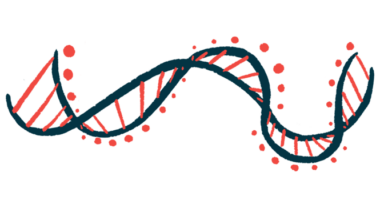50 Parkinson’s Genes Found With New Multidisciplinary Approach
Some identified genes worsened disease signs, others were neuroprotective

Fifty new genes that modified signs of Parkinson’s disease in a fruit fly model have been discovered using a multidisciplinary approach involving genomics, computational tools, and patient sample analysis, a study has reported.
Some gene candidates worsened Parkinson’s signs while others conferred neuroprotection, “underscoring their therapeutic potential,” the researchers noted. The findings suggest this approach can be applied to other complex disorders, they said.
“Our success in identifying so many new variants and the remarkable congruence in the results we obtained at each step of this screen supports this is as a powerful method to identify and validate new [Parkinson’s disease] candidate genes,” study lead Juan Botas, PhD, professor at the Baylor College of Medicine, in Texas, said in a news release.
“Moreover, as long as genomic information is readily available, this approach can be applied broadly to a wide range of complex genetic disorders and so we anticipate this study to have a wide impact on disease areas much beyond [Parkinson’s disease],” Botas added.
The multidisciplinary study, “Researchers discover 50 novel Parkinson’s disease candidate genes using an innovative integrated functional genomics approach,” was published in Human Molecular Genetics.
Many neurodegenerative disorders, such as Parkinson’s disease, result from the combined effects of mutations in several genes. So far, a few genes have been identified that cause familial or sporadic cases, but there are still many that could contribute to the condition.
Genome-wide association studies (GWAS), which find single genetic changes at specific locations in the genome associated with a disease, have advanced the understanding of Parkinson’s genetics.
However, it’s difficult to identify specific Parkinson’s-related genes because GWAS doesn’t provide information on the gene’s function. As a result, further in-depth analysis is required in animal models to demonstrate its involvement, which can be labor-intensive, time-consuming, and costly.
Transcriptome-wide association studies (TWAS) have recently been developed to predict genetic risk for complex diseases by looking for differences in gene activity, which reflects function, between people with and without a disease.
A new approach to finding new genes
Researchers at Baylor College and the Texas Children’s Hospital have designed an integrative, multidisciplinary approach to discover and validate new genes associated with Parkinson’s. The method applies GWAS and TWAS, combined with computer validation, patient sample analysis, and rapid fruit fly model evaluation.
GWAS and TWAS analysis revealed 160 genes whose altered activity across multiple tissues significantly correlated with increased Parkinson’s risk. Among them, 118 carried instructions to make proteins and included known Parkinson’s-linked genes such as SNCA and LRRK2. Several others were also identified whose activity was associated with Parkinson’s risk.
Computer methods were applied to further corroborate TWAS candidate genes that are functionally active in brain regions related to Parkinson’s. A total of 80 genes were considered likely to participate in disease development.
“We nominated 160 potential [Parkinson’s disease] candidate genes via GWAS and TWAS, which were further analyzed using other state-of-the-art computational tools and led to 80 high-confidence [Parkinson’s disease] genes,” lead author Jiayang Li said.
Because TWAS results suggested changes in candidate gene activity correlated with Parkinson’s, their activity was assessed in Parkinson’s patients’ blood samples. The activity of 35 candidate genes was significantly altered in patients. As such, these genes may potentially be blood-based biomarkers to inform Parkinson’s risk, the researchers noted.
To support these findings, TWAS candidate gene activity was measured in the brains of 93 people with Parkinson’s characteristics that meet the criteria for diagnosis, plus 72 controls.
Using this approach, 55 genes explained about 5%–20% of the total variation in five Parkinson’s-associated traits, including tremor, rigidity, gait, motor, and bradykinesia (slow movement). Among them, 17 were identified in the blood analysis, “further strengthening their association to [Parkinson’s disease] risk as these potential biomarkers might also link to clinical traits of the disease,” the researchers wrote.
“We established a link between these candidates and [Parkinson’s disease]-associated pathology by assessing if the expression patterns of these candidates were altered in brain and blood transcriptome of [Parkinson’s disease] patients,” Li added.
The role genes play in disease
The last step was to further validate the role played by TWAS gene candidates in Parkinson’s-related neurodegeneration. The team used an established fruit fly model that mimics the disease by producing human alpha-synuclein, a protein that forms clumps in the brains of patients, triggering cell death and causing symptoms.
Of the human candidate genes, 85 had counterparts in fruit flies. By modulating the activity of these insect genes, 50 improved or worsened alpha-synuclein-induced nerve dysfunction. Specifically, 31 genes improved nerve function, 29 with lower activity and two with higher activity, while 19 worsened nerve impairment with lower activity.
“Therefore, these gene perturbation data indicate that these genes may play roles in mechanisms underlying [alpha-synuclein]-induced [Parkinson’s disease] pathogenesis,” the research team wrote.
Notably, 27 genes with altered activity in fruit flies were consistent with TWAS gene activity predictions. Of these, 14 conferred neuroprotection in flies.
“To gauge functional relationships between these candidates and to assess which biological pathways they are involved in, we performed several in silico [computer] and in vivo [fruit fly] analyses that finally resulted in 50 [Parkinson’s disease] risk genes and 14 potentially neuroprotective genes,” Li said.
“These findings imply that our integrative approach could identify genes that modulate the risk of developing [Parkinson’s disease] and that our strategy could be applied to a wide range of complex traits for which GWAS data are available,” the authors wrote.








